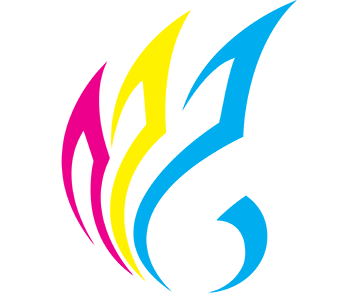1. Introduction: The Interplay Between Color Choices, Emotions, and Creativity
Colors influence us in more ways than merely affecting our brain chemistry— they shape our emotional landscape and, consequently, our creative potential. While the parent article, How Candy Colors Influence Brain Chemistry and Modern Design, delves into the neurochemical impacts of vibrant hues, this discussion explores how these emotional responses translate into creative processes. Understanding this connection offers artists, designers, and marketers a powerful tool to evoke specific feelings and inspire innovation through intentional color choices.
3. Cultural and Personal Influences on Color Perception and Emotional Impact
4. Color Combinations and Their Psychological Effects on Creativity
5. The Science of Color and Creativity: Neurological Insights
6. The Power of Color in Visual Arts and Design: A Creative Perspective
7. Practical Applications: Harnessing Color Choices to Enhance Creativity
8. From Emotional Response to Creative Action: A Feedback Loop
9. Conclusion: Integrating Emotional and Creative Dimensions of Color
2. The Role of Color in Shaping Mood and Motivation
Colors are potent emotional triggers that can evoke specific feelings and influence motivation across diverse settings. For example, bright red is often associated with excitement and urgency, making it a popular choice in marketing to stimulate action. Conversely, calming shades like blue promote relaxation and focus, fostering an environment conducive to creativity. Studies show that the saturation and brightness of colors modulate these effects; highly saturated hues tend to energize, while muted tones encourage contemplation.
In creative environments, understanding these nuances allows artists and designers to craft spaces and visuals that align with desired emotional states. For instance, a studio painted in warm, vibrant colors may boost energy and spontaneity, whereas a workspace with cool, subdued tones might favor deep thinking and innovation. Marketers leverage this knowledge by tailoring color schemes to inspire specific emotional responses, ultimately enhancing creative engagement and productivity.
Practical Implication
- Artists: Use bold, saturated colors to energize viewers or create contrast that evokes tension.
- Designers: Select calming palettes for environments intended for concentration or brainstorming.
- Marketers: Employ color psychology to influence consumer emotions and decision-making processes.
3. Cultural and Personal Influences on Color Perception and Emotional Impact
Cultural backgrounds profoundly shape how individuals perceive and emotionally respond to colors. For example, white symbolizes purity and peace in many Western cultures but is associated with mourning in some Asian societies. Personal experiences and memories further color our interpretations; a shade that reminds someone of childhood might evoke nostalgia and comfort, while the same hue could evoke sadness in others.
Recognizing these nuances is essential for creative professionals aiming to connect authentically with diverse audiences. Strategies include conducting cultural research, personalizing color palettes, and integrating storytelling elements that resonate on an emotional level. By leveraging cultural and personal associations, creators can craft more compelling, emotionally charged works that inspire and engage.
4. Color Combinations and Their Psychological Effects on Creativity
The harmony or discord in color schemes significantly influences emotional states and creative thinking. Complementary colors, such as blue and orange, can create vibrant tension that stimulates visual interest and cognitive engagement. Analogous schemes—colors adjacent on the color wheel—offer cohesion and calm, fostering sustained focus. Contrasting combinations may introduce emotional discord, encouraging problem-solving and innovative thinking.
| Color Scheme | Psychological Effect | Creative Impact |
|---|---|---|
| Complementary (e.g., Blue & Orange) | Creates vibrancy and visual tension | Stimulates dynamic thinking and innovation |
| Analogous (e.g., Green, Blue-Green, Blue) | Provides harmony and calmness | Supports sustained focus and nuanced expression |
| Contrasting (e.g., Red & Green) | Elicits emotional tension and alertness | Encourages problem-solving and creative tension |
Case studies show that intentional use of these schemes can foster an environment where innovation flourishes. For instance, the bold contrasts in modern branding often evoke energetic responses conducive to creative problem-solving.
5. The Science of Color and Creativity: Neurological Insights
Neuroscientific research reveals that different colors activate specific brain regions involved in emotion and cognition. For example, the amygdala responds strongly to emotionally charged hues like red and yellow, while blue tends to activate areas associated with calmness and analytical thinking. When combined with creative tasks, these activations influence divergent thinking—the ability to generate multiple solutions—by modulating emotional states.
Functional MRI studies demonstrate that environments rich in psychologically stimulating colors can enhance neural pathways associated with idea generation. For instance, vibrant, candy-inspired color schemes can elevate dopamine levels, fostering motivation and openness to new concepts, which are critical for creative breakthroughs.
„Understanding the neurological impact of color provides a pathway to designing environments that naturally stimulate creative thinking and emotional resilience.“
6. The Power of Color in Visual Arts and Design: A Creative Perspective
Artists and designers manipulate color deliberately to evoke specific emotional responses, balancing aesthetic appeal with emotional resonance. For example, contemporary artists like Yayoi Kusama use bold, contrasting colors to create immersive, emotionally charged environments that challenge perceptions and stimulate viewer engagement.
Designers utilize color to guide emotional journeys—warm hues draw viewers in, while cooler tones provide space for reflection. The strategic use of candy-inspired palettes, with their vibrant, playful tones, often evokes joy and nostalgia, encouraging viewers to connect emotionally and think creatively about the artwork or product.
By understanding the emotional language of color, creators can craft works that do more than please the eye—they inspire thought, evoke memories, and foster innovation.
7. Practical Applications: Harnessing Color Choices to Enhance Creativity
To leverage color effectively, consider the emotional goals of your project. For example, selecting a palette with energetic yellows and oranges can stimulate enthusiasm, while calming greens and blues foster focus. Tools like digital color palette generators and A/B testing can help refine these choices for maximum impact.
Ambient lighting also plays a crucial role; warm lighting enhances vibrant colors, creating an inviting atmosphere, whereas neutral lighting allows true color perception, ideal for detailed work.
In collaborative spaces, using color zones can delineate different emotional or task-oriented areas, facilitating creative flow. For individual work, personalizing color schemes based on personal associations can boost motivation and emotional well-being.
8. From Emotional Response to Creative Action: A Feedback Loop
Emotional reactions to color often serve as catalysts for creative ideas. For instance, a sudden burst of vibrant pink might inspire a designer to explore new branding concepts. Recognizing these triggers enables deliberate use of color to guide the creative process.
Furthermore, intentionality in color selection—such as intentionally choosing candy-inspired hues to evoke joy—can reinforce emotional states conducive to innovation. This creates a feedback loop where emotional responses fuel creativity, which in turn influences future color choices and design strategies.
„Mastering the emotional language of color transforms passive perception into active creative inspiration.“
9. Conclusion: Integrating Emotional and Creative Dimensions of Color
The intricate relationship between color, emotion, and creativity underscores the power of conscious color choices in shaping our artistic and innovative outputs. As explored, understanding how colors influence brain chemistry and emotional responses allows creators to design environments and works that inspire and motivate.
This cyclical process—where emotional responses driven by color inform creative actions, which then reinforce future emotional engagement—embodies the essence of a dynamic creative ecosystem. Building on the foundation established in How Candy Colors Influence Brain Chemistry and Modern Design, we see that intentional color management is essential for fostering innovation and emotional well-being in all creative domains.

